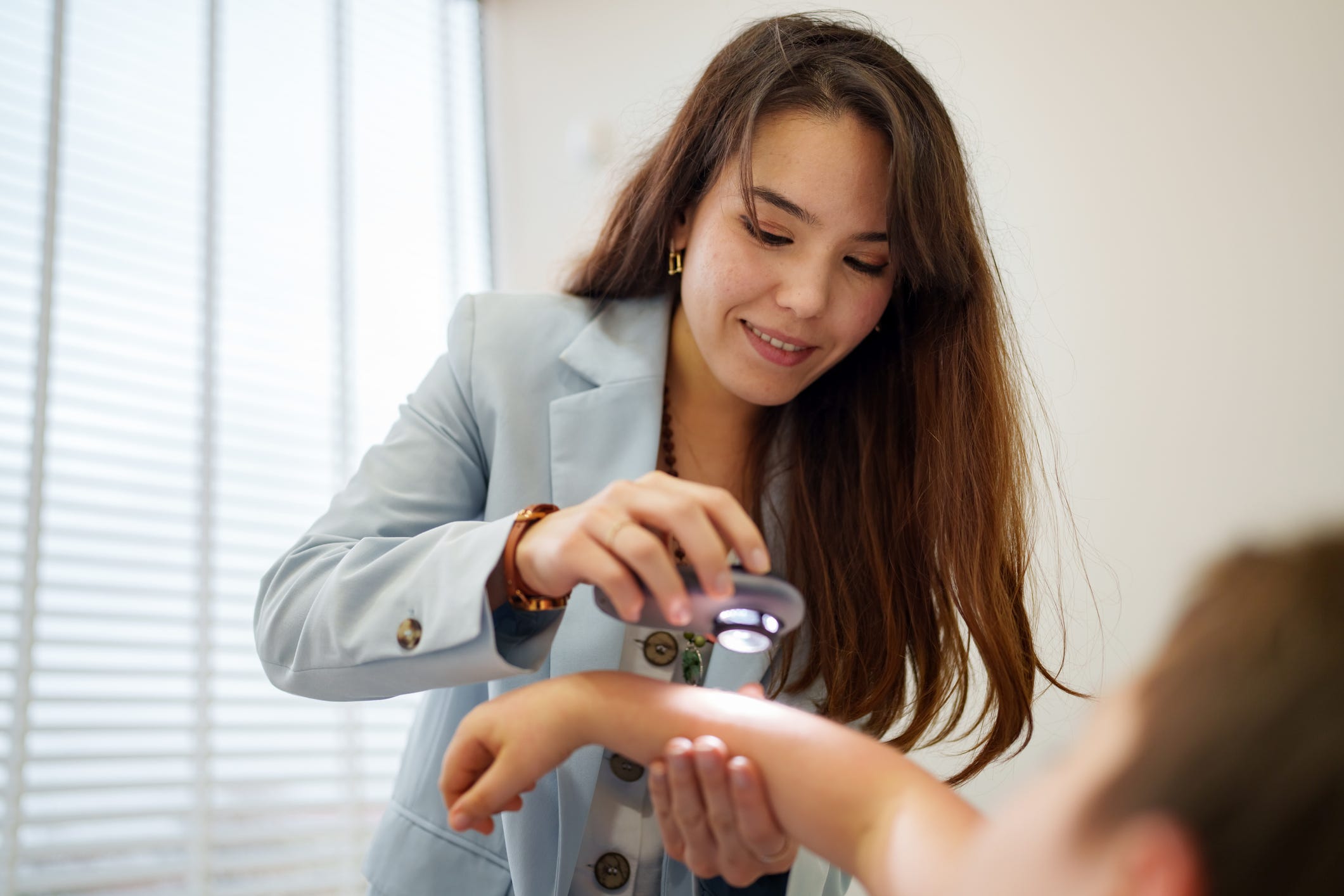
Skin Cancer: Early Detection and Risk Factors
Skin cancer is the most common type of cancer, with an estimated one in five Americans developing it at some point in their lives. It manifests in various forms, including basal cell carcinoma, squamous cell carcinoma, and melanoma.
Types of Skin Cancer
Basal Cell Carcinoma (BCC)
- Most common form of skin cancer
- Typically appears as a pearly or waxy bump that may bleed or crust
- Slow-growing and rarely spreads
Squamous Cell Carcinoma (SCC)
- Second most common form of skin cancer
- Develops as a rough, scaly patch that may bleed or crust
- More aggressive than BCC but still highly treatable
Melanoma
- Most serious type of skin cancer
- Often appears as a dark brown or black spot with an irregular border
- Can spread to other parts of the body if not treated early
Risk Factors
Exposure to Ultraviolet (UV) Rays
- The leading cause of skin cancer
- Emitted by the sun and tanning beds
Fair Skin Tone
- People with lighter skin tones are at greater risk than those with darker skin tones
Family History
- Having a family member with skin cancer increases one’s risk
Tanning Bed Use
- Tanning beds emit high levels of UV radiation, increasing the risk of skin cancer
Chronic Inflammation
- Skin exposed to chronic inflammation, such as from eczema or psoriasis, is more susceptible to skin cancer
Weakened Immune System
- Individuals with weakened immune systems, such as those with HIV/AIDS or organ transplants, are at higher risk
Other Risk Factors
- Certain rare skin cancers are primarily virus-driven, such as Merkel cell carcinoma and Kaposi sarcoma
Moles and Skin Changes
It is important to be aware of any changes in skin or moles. Any new or unusual spots, bumps, or moles, especially if they are changing in size, shape, or color, should be examined by a dermatologist.
Prevention and Early Detection
Sunscreen
- Use a broad-spectrum sunscreen with an SPF of at least 30 daily, even in winter
- Reapply sunscreen every two hours
Protective Clothing
- Wear hats, sunglasses, and clothing that covers exposed skin
Limit Sun Exposure
- Avoid the sun during peak hours (10 am to 4 pm)
Dermatologist Exams
- Regular skin exams by a dermatologist can help detect skin cancer early
Treatment
Most skin cancers are highly treatable if detected early. Treatment options may include:
- Surgery
- Radiation therapy
- Chemotherapy
- Immunotherapy
Conclusion
Skin cancer is a serious but preventable disease. By understanding the risk factors, observing changes in one’s skin, and taking preventive measures, individuals can reduce their risk and catch any potential skin cancers early for successful treatment.
